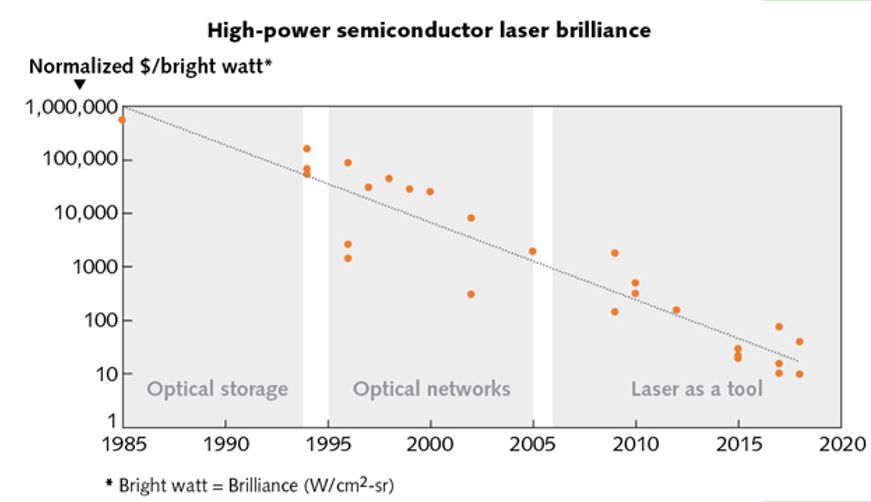Overview of high power semiconductor laser development part two
Fiber laser.
Fiber lasers provide a cost-effective way to convert the brightness of high power semiconductor lasers. Although wavelength multiplexing optics can convert relatively low-brightness semiconductor lasers into brighter ones, this comes at the cost of increased spectral width and photomechanical complexity. Fiber lasers have proven to be particularly effective in brightness conversion.
Double-clad fibers introduced in the 1990s, using a single-mode core surrounded by multimode cladding, can effectively introduce higher-power, lower-cost multimode semiconductor pump lasers into the fiber, creating a more economical way to convert high-power semiconductor lasers into brighter light sources. For ytterbium-doped (Yb) fibers, the pump excites a wide absorption band centered at 915nm, or a narrower absorption band near 976nm. As the pumping wavelength approaches the lasing wavelength of the fiber laser, the so-called quantum deficit is reduced, maximizing efficiency and minimizing the amount of waste heat that needs to be dissipated.
Fiber lasers and diode-pumped solid-state lasers both rely on the increase in brightness of the diode laser. In general, as the brightness of diode lasers continues to improve, the power of the lasers they pump also increases. The brightness improvement of semiconductor lasers tends to promote more efficient brightness conversion.
As we expect, spatial and spectral brightness will be necessary for future systems that will enable low quantum deficit pumping for narrow absorption features in solid-state lasers, as well as dense wavelength reuse schemes for direct semiconductor laser applications.
Figure 2: Increased brightness of high-power semiconductor lasers allows applications to be expanded
Market and application
Advances in high-power semiconductor lasers have made many important applications possible. Since the cost per brightness watt of high-power semiconductor lasers has been reduced exponentially, these lasers both replace old technologies and enable new product categories.
With cost and performance improving more than 10-fold every decade, high-power semiconductor lasers have disrupted the market in unexpected ways. While it is difficult to predict future applications with precision, it is also instructive to look back over the past three decades to imagine the possibilities of the next decade (see Figure 2).
When Hall demonstrated semiconductor lasers more than 50 years ago, he launched a technological revolution. Like Moore's Law, no one could have predicted the brilliant achievements of high-power semiconductor lasers that followed with a variety of different innovations.
The future of semiconductor lasers
There are no fundamental laws of physics that govern these improvements, but continued technological progress is likely to sustain this exponential development in splendor. Semiconductor lasers will continue to replace traditional technologies and will further change the way things are made. More importantly for economic growth, high-power semiconductor lasers will also change what can be made.





















